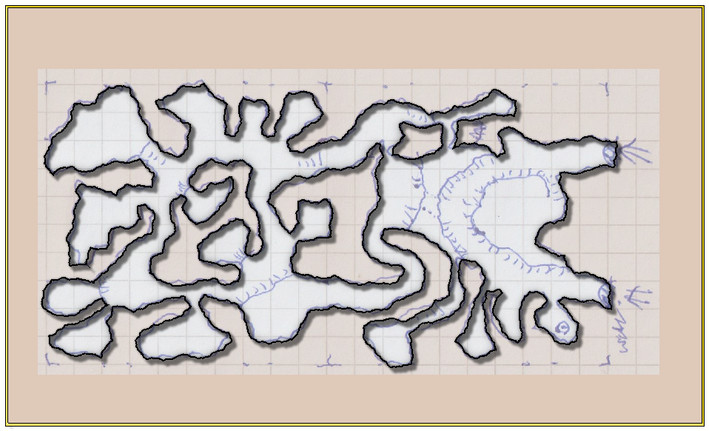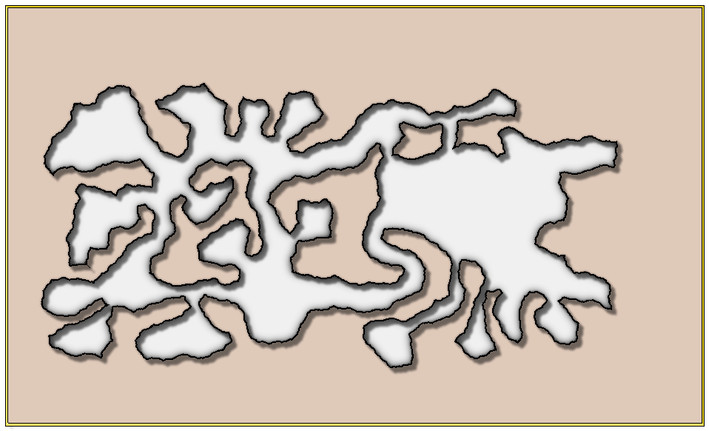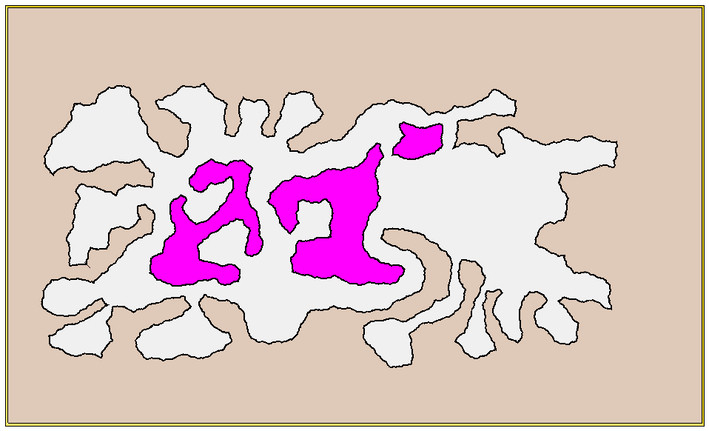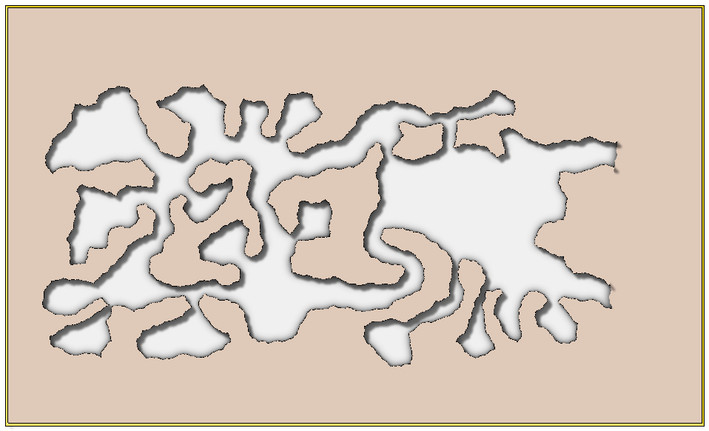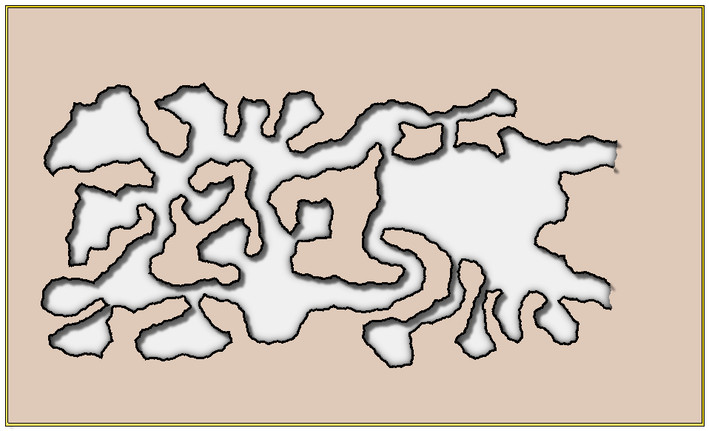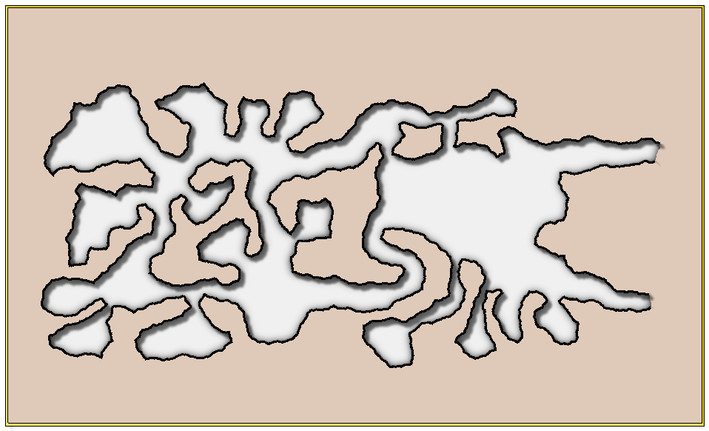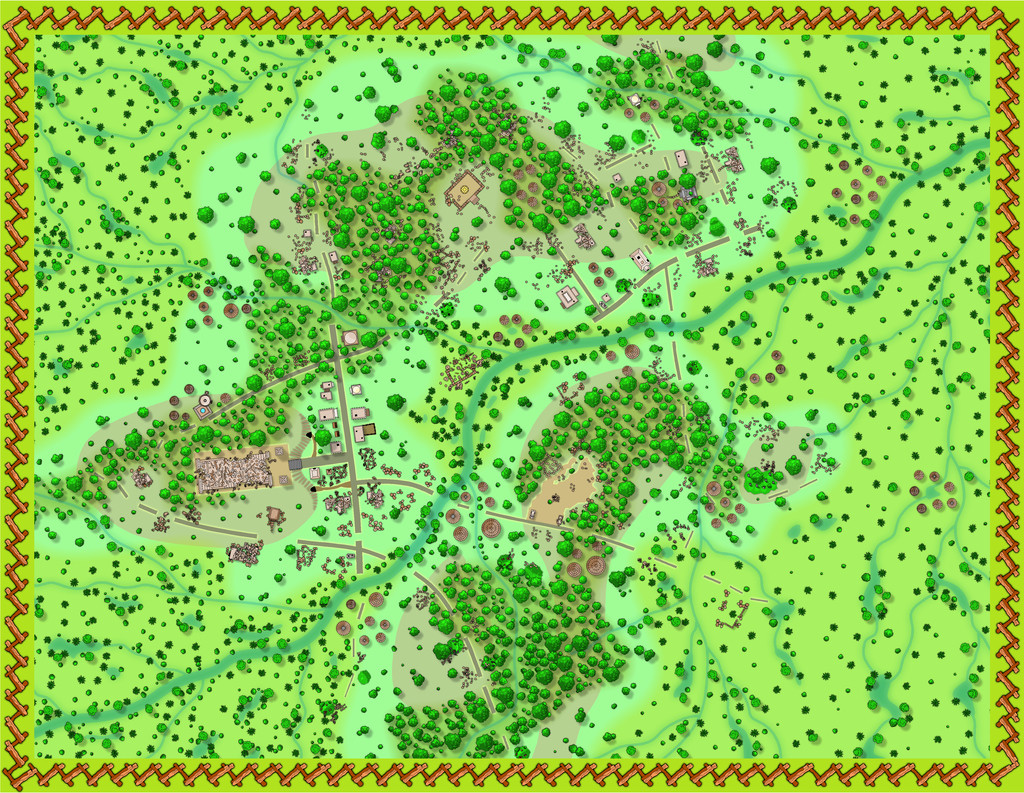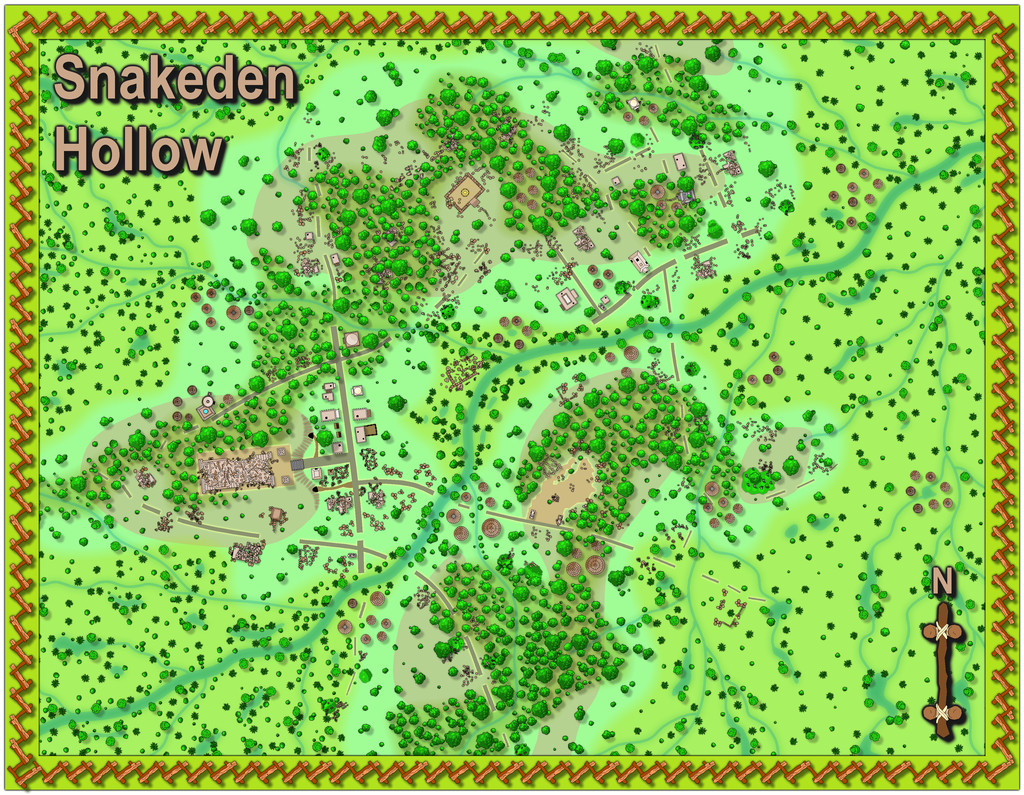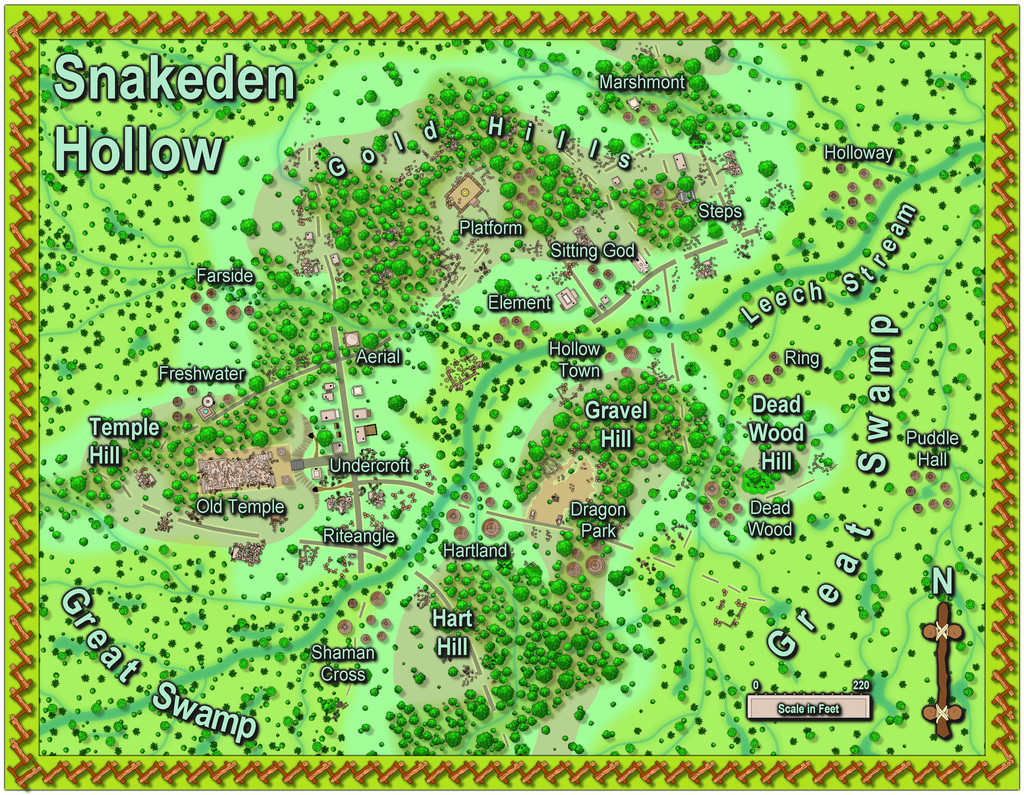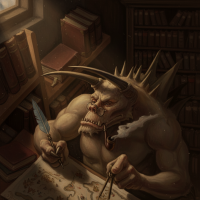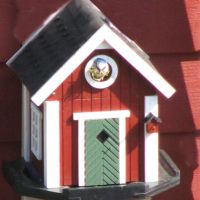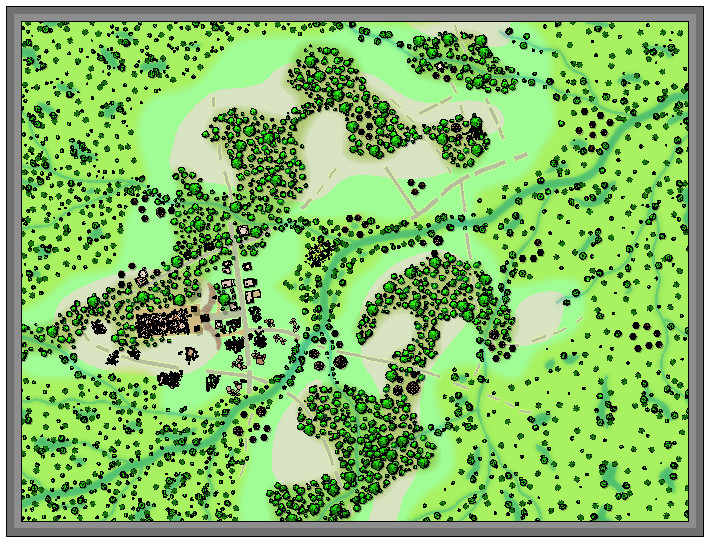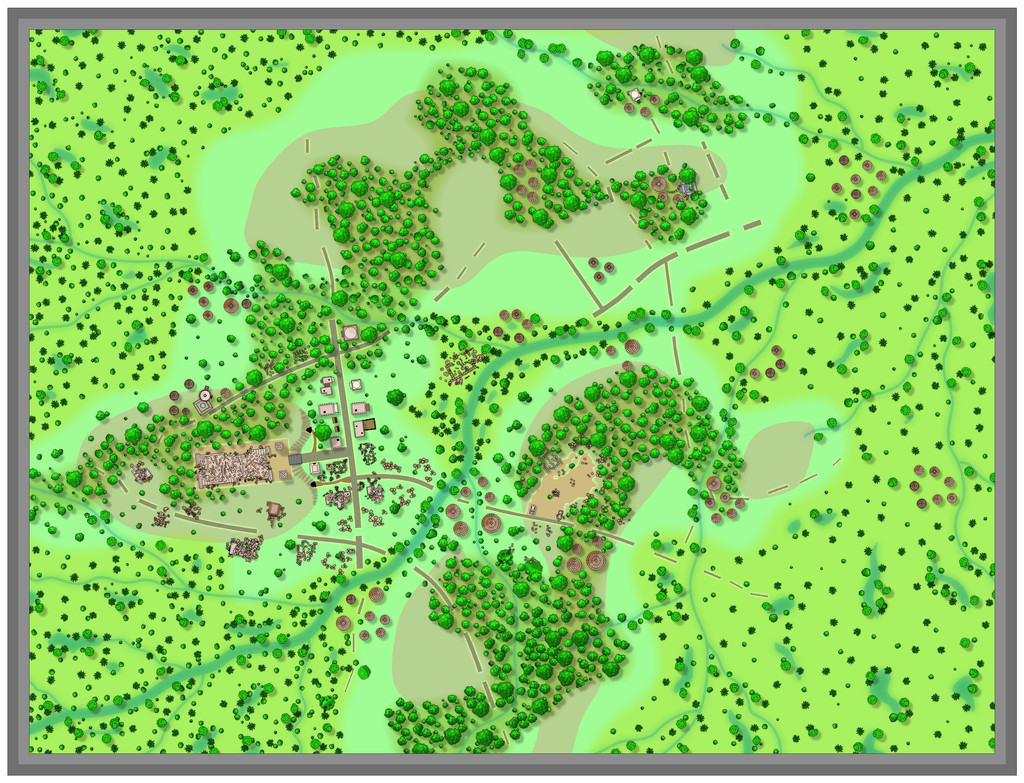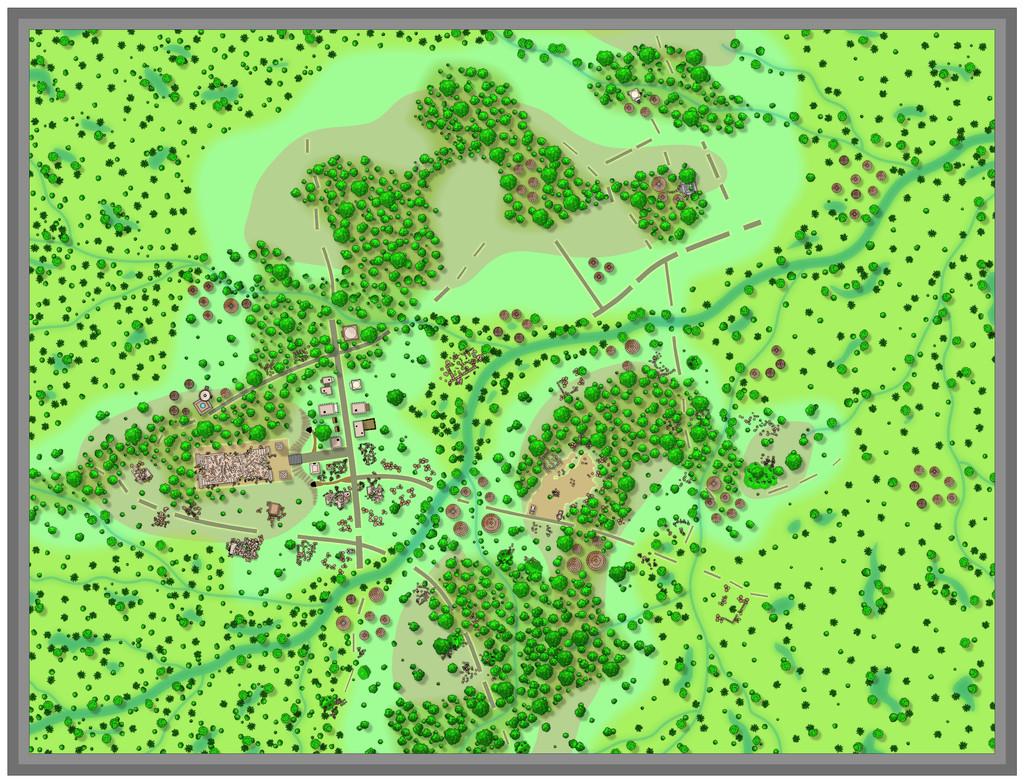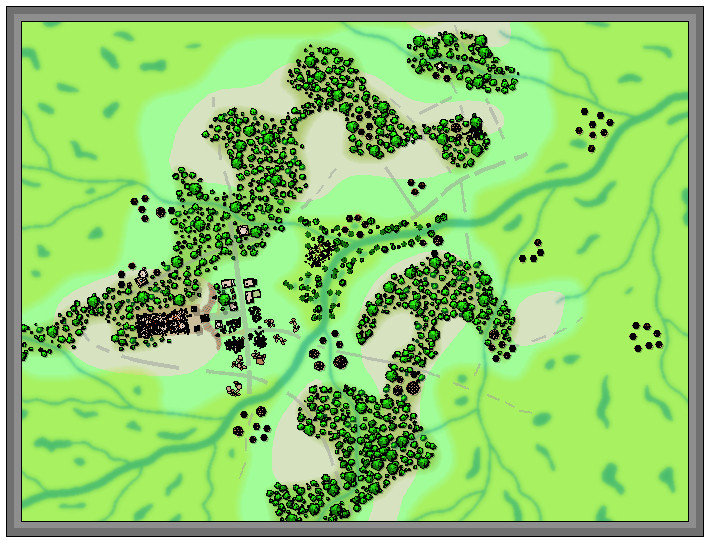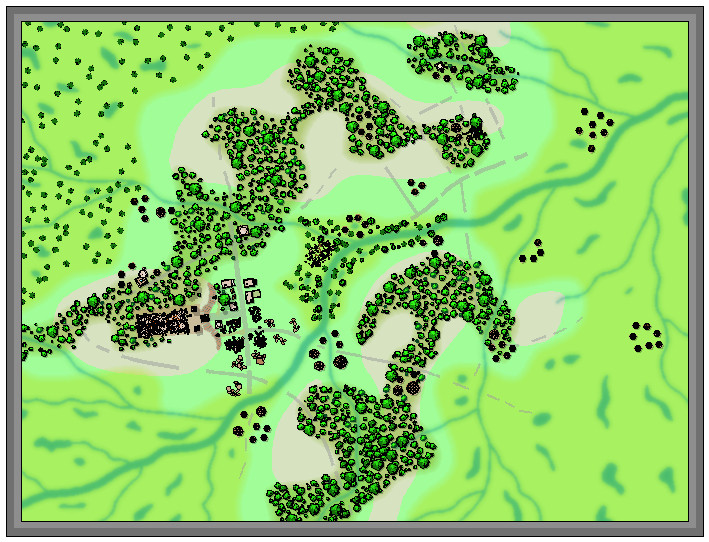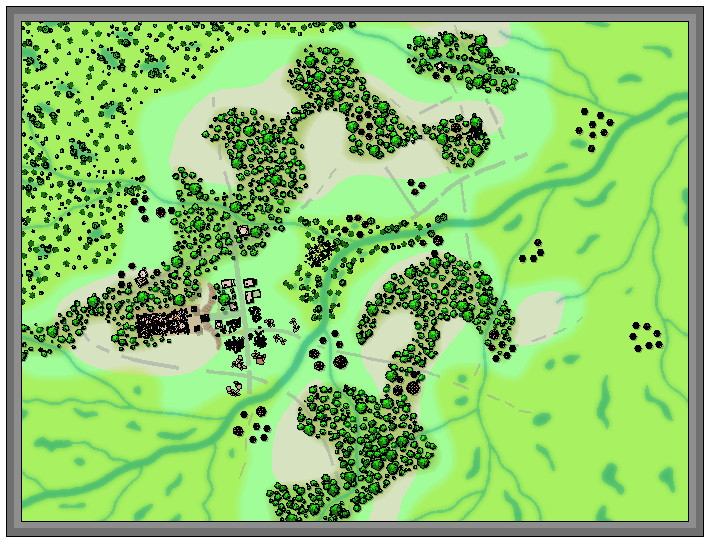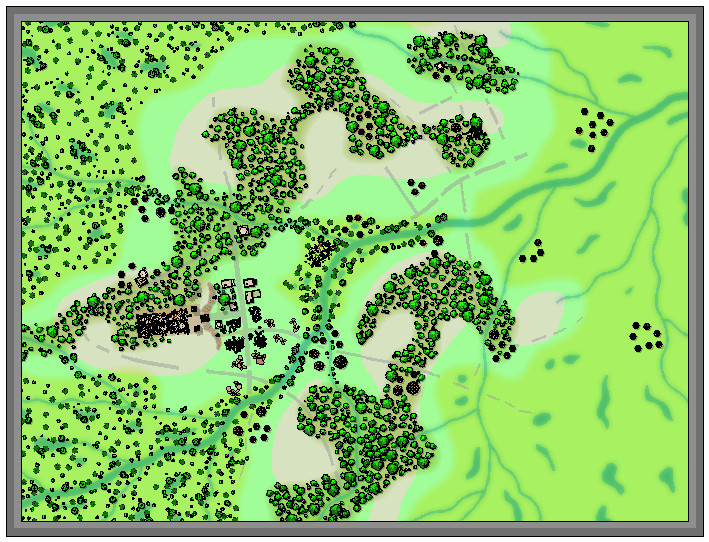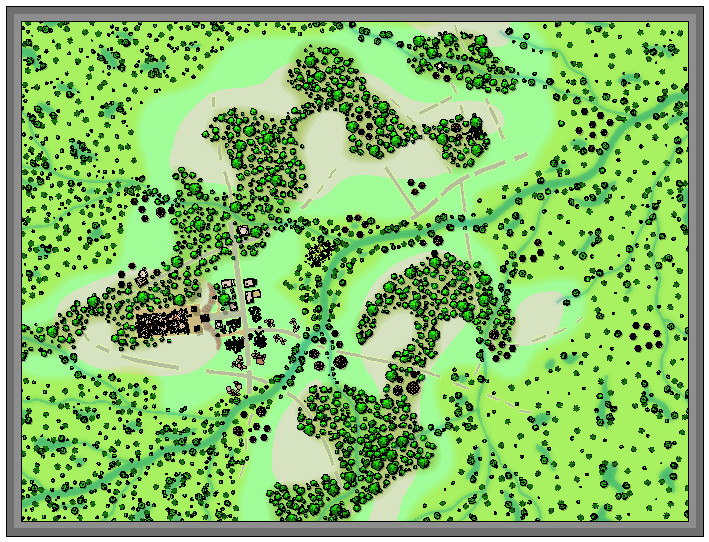
Wyvern
Wyvern
About
- Username
- Wyvern
- Joined
- Visits
- 3,151
- Last Active
- Roles
- Member
- Points
- 5,382
- Rank
- Cartographer
- Badges
- 24
-
[WIP] Community Atlas: Snakeden Swamp, Lizard Isle, Alarius - Dedicated to JimP
Having decided to add an underground map for the Snakeden Hollow one, showing to where those two cliff entrances lead, an extra floorplan was needed from the Inkwell dice designs to accommodate it. I opted for a caves-only layout, and because I already had in mind what the main critter was going to be in there, it needed to be a sufficiently large and interesting layout too. The size and shape of Temple Hill had already indicated a two-dice pattern was going to be more likely, so I dug through the options available for cavern layouts that hadn't been used already, or weren't already planned, and rolled a few dice, before finally selecting one die-face each from the "Lairs" and "Spellunker" dice sets.
That pattern was sketched onto graph-paper as usual, and then scanned-in ready to be redrawn in CC3+. This first image (reduced-size at this point, as typical from the above) shows the basic wall lines over that hand-drawn scan, done using the DD Pro Dungeon style (which, much as the other "early" styles used in this map-group, turned out to have more sheets and effects present than originally expected).
As this indicates, there are going to be various internal levels within this single layout, which promises an increasing degree of complexity in the map-drawing. I feel an attack of the sheets (and more effects) could be imminent!
There are obvious elements in need of adjusting already. Both entrances have solid wall lines across them, for instance. Plus of course, as anyone who's used this drawing style may realise, the wall lines don't just draw themselves, as they're half of the basic caves drawing tool with the floors (hidden here for clarity of the scanned JPG). Oh and that word in the lower right corner actually says "Well", as that's what that circle-and-dot symbol nearby represents. I couldn't read it either, when it came to it...
As the perceptive may appreciate from this, some CC3+ magic has already been applied here, laying down Color Key polygons for the internal solid-rock elements, by copying the relevant wall lines to the Floors sheet, and converting them to filled polys of suitable colour. The same map without the bitmap and with the floors:
and then with the effects turned off:
Next task was to break the wall lines for the two entrances, and then add a series of masks to hide the unwanted segments of wall shadow in the solid rock. Not sure the shadows will remain ultimately. However, the masks help clean-up the overall look somewhat:
Well, actually a bit too much, as the wall lines are now almost invisible. I could just have thickened up the lines, although that starts to encroach into the available space in the caves, so instead, I just copied the wall lines onto a new sheet above the mask with no effects on, and thickened those up a little instead:
As is probably obvious, the map layout has been deliberately off-centred to allow a sliver of the exterior to be added along the right-hand edge, hence why the wall shadows at that end haven't been fully masked yet. When I dropped-in the exterior JPG scan though, it was immediately obvious that both tunnels needed extending further, to better allow the cliff line's curvature to fit to the interior design, so that was the next step:
That proved more problematic than expected, as for reasons I never got the bottom of, while extending the floor was simple enough using the "Edit" function for the cave drawing tool, as was editing three of the four wall lines with a suitable new drawing tool, the uppermost little new wall section would not connect to the rest of itself after completing the edit process. The line drew just fine there, but as a separate entity, something I only discovered when copying the lines to the above-mask sheet. I tried redrawing it, with no better success, and as it looks OK, decided to just leave well enough alone!
It did though take rather more time than expected to get to this stage, so that's where we'll have to leave it for today.
-
[WIP] Community Atlas: Snakeden Swamp, Lizard Isle, Alarius - Dedicated to JimP
The final stages of mapping took a bit longer than expected, as that top area, still incomplete last time, had been allocated more ruins and features than many other spots. Along with this, the additional minor stream channels were emplaced in the swamp too, with a few more shrubs and trees in places:
I'd always intended to replace the map border with something more rustic, like that for the Snakeden Swamp map earlier, and settled on the angled fence-line symbols from the options available in the CD3 Vector Shaded style. They also look like sharp teeth a little, a happy accident. Getting these to look right took quite a degree of trial and error though, and while the corners don't perfectly match on this final version, I was happy with that, because I didn't really want the frame to look too perfect anyway - Lizardfolk fences, after all!
After which it was time to start thinking of labelling the map, adding a north pointer and a scale. Unfortunately, there aren't options for the latter two in this style, so alternatives from what symbols were available had to be drafted-in, again with some experimentation, and tweaking of effects:
At this point, the pale brown lettering seemed fine. However, when some place-name labels started being added across the map, it rapidly became clear that both this colouring and the black shadow and glows were interfering with the effects on the mapped symbols, creating irritating bleed-through lines on parts of the text. More experiments followed to adjust both to something that was still sufficiently clear, yet which wasn't equally causing such problems. Which turned out to be this:
With this map finished, it's now time to head underground, since although the little square surface map with the cliff-line (the area now labelled as "Undercroft") was the original dice design that prompted these maps, it was obvious to me from the outset that the two cave entrances in the cliff would demand more attention - as to be shown next time, if all goes to plan!
-
Best Map Style(s) for Creating a Set of Maps from Large Scale, to Medium, and then Small
I've been enjoying mapping with the earlier CC2 Pro style of options recently (cities need something like the CD3 Vector Shaded option instead, as there isn't a CC2 version for those), and they also provide a near-Schleyian-huge range of vector symbol options, from continental overland right down to dungeon scales. The vector styles are also easier to create additional symbols with, should you need to, as they are straightforward drawings in the main, with a simple colour scheme.
-
[WIP] Community Atlas: Snakeden Swamp, Lizard Isle, Alarius - Dedicated to JimP
Here we see the first segment of "new" ruins being added, around the originating dice-map segment in the lower centre-left:
It was at about this point I realised it was growing harder to define the road lines, and where the hill contours were, a problem that worsened when the vegetation scatter began to be added around those previously clearer areas. Thus a lengthy spell of experimentation, changing the effects and colouring involved, followed. That in turn needed more features adding elsewhere, using the central section adjoining that already completed, just to make sure everything still worked OK. The results of all that:
Which only brought up a further issue, as it's obvious that the reduced-resolution images are all looking rather too dark and messy now, especially over those ruined structures. So more experimentation followed with higher-res images and some antialiasing, to get to this degree of clarity (same image as above):
Following all of which, there wasn't much time to do more than a few further additions ahead of today's postings, which is where things are currently:
Not too far from completion now, at least, albeit still with the labelling to begin, not to mention those extra streams!
-
[WIP] Community Atlas: Snakeden Swamp, Lizard Isle, Alarius - Dedicated to JimP
Clearly, something was needed to add further character to the swamps, and the first thing was slotting-in some lakes, ponds and smaller watercourses:
The new river lines were all kept deliberately the same size, and perhaps a little wider than necessary, to try to ensure they'd still be sufficiently visible after adding the vegetation. That latter was to be a mixture of mostly lower (lesser shadow), smaller, patches of greenery, including little-shadowed palm tree symbols to represent stands of swamp reeds, with a scatter of taller, = longer-shadowed, trees. This next shot shows the opening trial of this in the central hollow, although the sharp-eyed may also spot a couple of fresh structures have appeared in the northeastern woods as well, as I'd missed a couple of still-standing places there earlier, hidden among the chaos of my hand-scrawled base map:
Another two screenshots help indicate the general "vegetising" process over the top left swampy region, the first image with just the flattened-palm-tree "reeds", and the second with the remaining bushes and trees:
Two more images illustrate how the remaining regions were similarly filled-in, and how some vegetation scatter was added to the stream-lines linking between the edges of the swamps and woodlands:
I've left the swampland vegetation somewhat sparser on the right side of the map to give some space for possible other features to be added, as I hadn't firmly decided if some of the roads and tracks might be continued into it at this stage, or exactly what structures might be near those there already. Plus I also wanted to add some more stream lines at some stage later on (still haven't done those).



